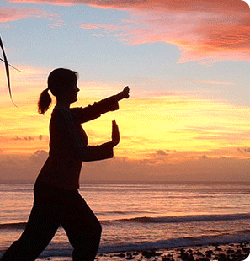 A project that I'm currently working on for publication is a manual of occult theory and practice for the beginning and intermediate student. This isn't a book about magic -- it's occultism in the sense found in Manly P. Hall and The Kybalion, the quest for wisdom and revelation through study of occult lore and practice of meditation and certain other related disciplines. The one ritual that plays a central role in it is the Sphere of Protection -- and thereby hangs a tale.
A project that I'm currently working on for publication is a manual of occult theory and practice for the beginning and intermediate student. This isn't a book about magic -- it's occultism in the sense found in Manly P. Hall and The Kybalion, the quest for wisdom and revelation through study of occult lore and practice of meditation and certain other related disciplines. The one ritual that plays a central role in it is the Sphere of Protection -- and thereby hangs a tale. One of the things that was just beginning to happen back in the waning years of classical American occultism's golden age was that certain Asian exercises were beginning to find a home in the occult repertory. That's a process that deserves to be restarted, because (for complex historical reasons) Europe and the European diaspora lost their subtle-body exercises a long time ago, while Asia kept the traditions going. Since occult training (as distinct from magical training) doesn't involve circulating energy through subtle centers in the body -- the thing that can produce messy results when you mix it with Asian ways of doing the same thing -- it should be possible to combine occult training with practice of some of the more widely available Eastern exercise systems.
"Should be possible" is a shaky reed to lean on, though. Thus I'd like to ask for some help from my readers.
I know a fair number of readers of mine have taken up the Sphere of Protection as a regular practice, using either The Druid Magic Handbook or my posts here on Dreamwidth as a guide. I know that some of you also practice eastern exercises or physical disciplines such as yoga. What I want to know is whether you've noticed any interaction at all between regular practice of the SoP and regular practice of Eastern movement arts, including but not limited to:
- Aikido
- Hatha yoga
- Karate
- Shintaido
- Tai Chi Chih
- Taijiquan
(no subject)
Date: 2020-03-01 11:31 pm (UTC)A couple of weeks ago on MM someone recommended the book “Asana Pranayama Mudra Bandha” by Swami Satyananda Saraswati teaching the Bihar method of yoga. I would like to strongly second that recommendation as an irreplaceable treasure trove of actually useful information. For years I have taught absolute beginners yoga and this is my go-to source. One of the things I like to teach my beginners is to feel and really wrap their heads around the presence of their energy body. The Pawanmuktasana series of mindfulness exercises at the beginning of the book excel at this. They are simple, powerful, easy to remember and anyone can do them. It’s all about linking the breath with the movement and paying attention. For example “padanguli naman” is toe bending...inhale and bend your toes toward you, exhale and bend them away. Fairly quickly they are understanding how our energy body is responsible for the twinkle in our eyes and what feels so good after a good laugh. And from there of course , it’s endless how we can work with the energy body, make it healthier and perhaps move onto to more specific energy work 😉
Also before I had mentioned bringing focused energy into other parts of the body than only the heart center (especially in my ashtanga class!) slowly over time. At the end of every practice I “namaste” and make eye contact with each student and then thank them. Lately after I “namaste” they have begun to spontaneously “namaste” and thank each other 😀. Nice to see some egos coming down and being replaced with a little comraderie.
Your project is very exciting and I look forward to learning more as it progresses Namaste to you fine teacher!
(no subject)
Date: 2020-03-02 04:13 am (UTC)(no subject)
Date: 2020-03-02 09:12 pm (UTC)open_space